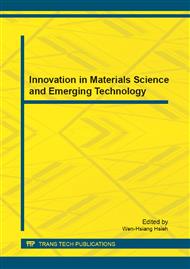p.48
p.53
p.58
p.63
p.68
p.73
p.78
p.83
p.88
Hydrolysis of Corncob Residue by Enzymes from Fungi C1067 and the Products Analysis by Capillary Electrophoresis
Abstract:
To achieve high enzymatic hydrolytic efficiency of corncob residue, one strain, Trichoderma C1067, with the enzyme activity of corncob residue as high as 4.5g/L glucose liberated per hour in 0.5mL crude cellulase and 0.5mL citric acid /sodium citrate buffer under the assay conditions, was carefully studied. The optimal carbon and nitrogen sources used in the fermentation medium are as follows: corncob residues 2.0%, wheat bran 1.5%, corncob 0.5%, rice straw 0.5%, peptone 0.1% and corn steep liquor 4%. The optimal conditions of saccharification for corncob are 55°C and pH 4.0. The sugars gained in the hydrolysate consist of glucose 4.1% and xylose 0.4% after enzymolysis for 72h, tested by capillary electrophoresis.
Info:
Periodical:
Pages:
68-72
Citation:
Online since:
December 2011
Authors:
Keywords:
Price:
Сopyright:
© 2012 Trans Tech Publications Ltd. All Rights Reserved
Share:
Citation:


